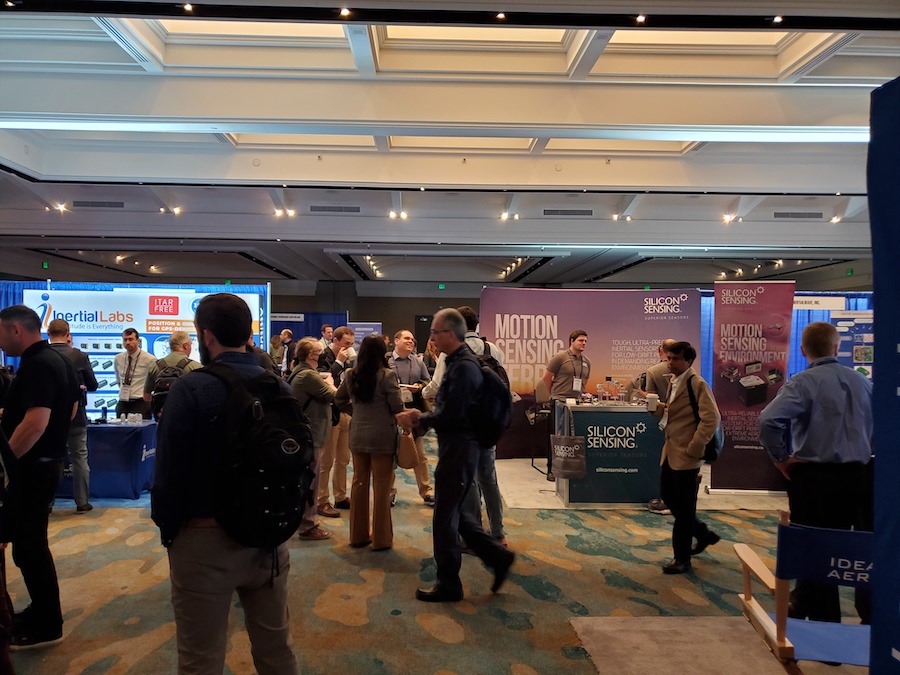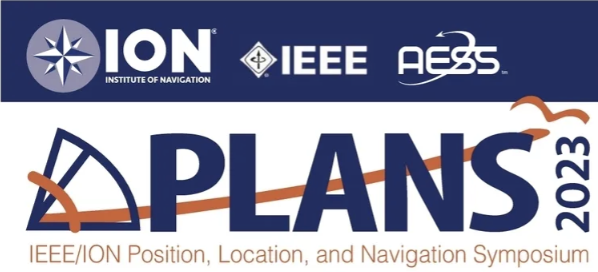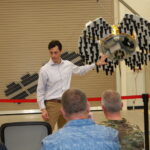PNT experts from around the world have gathered to share their research and the latest advancements in the field during this week’s biennial Position Location and Navigation Symposium (PLANS).
The conference, co-sponsored by IEEE’s Aerospace and Electronics Systems Society (AESS) and the Institute of Navigation (ION), is held in the spring of odd numbered years. Speakers and attendees traveled to Monterey, Calif., for the 2023 edition, with tutorials beginning on Monday and technical sessions the focus Tuesday through Thursday.

Tuesday morning’s technical sessions covered a variety of topics, including High-Performance Inertial Sensors, Precise GNSS Positioning, Multi-Sensor Integrated Systems and Sensor Fusion Technologies, and Robotic and Indoor Navigation. In the afternoon, attendees had the opportunity to sit in on presentations covering Small Size or Low-Cost Inertial Sensor Technologies, the Frontiers of GNSS, Navigation Using Environmental Features, and Collaborative and Networked Navigation.
In one of the Collaborative and Networked Navigation sessions, Jason Gross of West Virginia University presented “Gaussian Process Regression for Learning Environment Impacts on Localization of a UAV with Respect to UGV for Search Planning.” He went over the benefits of leveraging both systems and the interest in multi-sensor fusion for this type of application. LiDAR and cameras make it possible for the robot to see the drone around it, with the drone following some motion from the robot to find the path that minimizes localization.
As part of the Frontiers of GNSS technical session, Brenton C. Young, President of AOSense, presented “Enhancing PNT with Quantum-Atomic Technologies,” stressing the importance of the technology, recent advancements, future outlooks and how it helps rather than competes with GNSS. His presentation was followed by Brad Parkinson’s talk, “Synergies and Limitations of Inertial Measurements for PNT.”
Parkinson presented to a full room, and covered the importance of toughening GNSS from a total systems view point, particularly in stressed environments, and increasing resistance to jamming. He also hit on the limits and challenges inertial “flywheeling” has to overcome. He stressed inertial sensors are complementary to GNSS but not a substitution. All inertial sensors benefit “enormously from GNSS,” he said, and without it most errors are “doubly integrated and grow with time, or perhaps time squared.”
“I advocate inertial. I grew up with inertial,” he said. “…But inertial flywheeling is limited.”
Tuesday’s sessions ended with a presentation on “Opportunistic Navigation with Multi-Constellation LEO Satellites,” another popular session with related talks scheduled for Thursday, and networking in the exhibit hall.
Throughout the day, attendees also had the opportunity to walk the exhibit hall and talk with various manufacturers about their products. Exhibitors include Ideal Aerosmith, Gladiator Technology, VectorNav Technologies, Syntony, Silicon Sensing Systems, Silicon Designs Inc., CAST Navigation and Thales AVS France SAS.
The exhibit hall will be open again Wednesday with technical sessions continuing Wednesday and Thursday.





